Northern Vietnam Off the Beaten Track: Top 15 Destinations
Searching for the ‘authentic’ Vietnam? Curious to escape the path well-Instagrammed and see a different side of the country? Or perhaps you want to spread your tourism dollars by supporting emerging destinations and small communities. Whatever your motivation, there’s a way to see Vietnam off the beaten track.
While Ha Long Bay, Sapa and Ninh Binh are musts for any first-time visitor to Vietnam’s travel itinerary, sometimes it pays to shrug off the crowds and look beyond the major hubs.
From underrated cities to lesser-known mountain regions and rising ecotourism stars – from the best outdoor activities to living history lessons and hands-on cultural encounters – here are 15 of my favourite underrated destinations in Northern Vietnam.
Also read: 5 places you can’t miss in south Vietnam.
Please note: This post contains affiliate links, meaning I may earn a commission if you make a purchase by clicking a link (at no extra cost to you). Learn more.
Mục Lục
15 destinations where you can experience Northern Vietnam off the beaten track

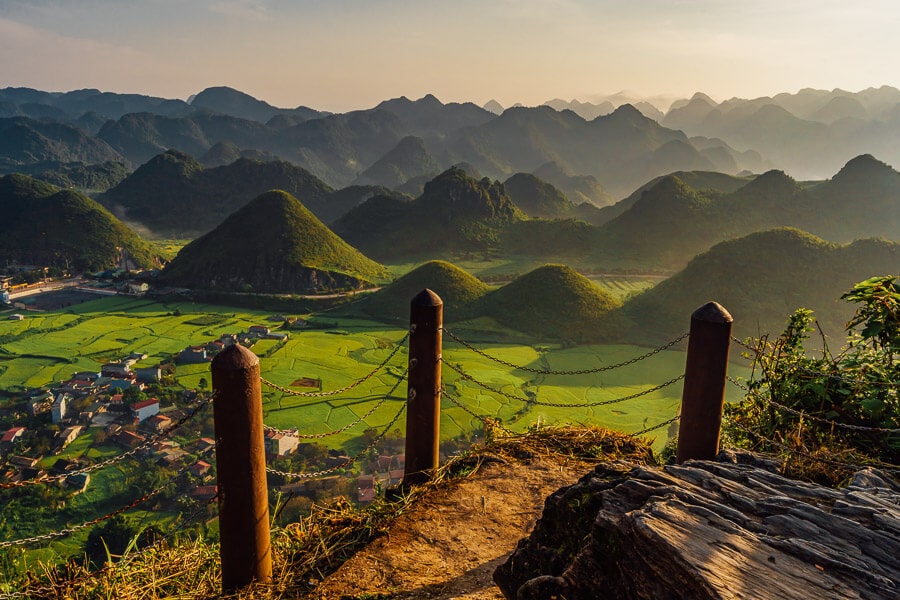 Fairy Mountain in Ha Giang.
Fairy Mountain in Ha Giang.
Ha Giang
All but isolated from the rest of the country until the 1970s, you often hear Ha Giang described as Vietnam’s ‘final frontier’. The northern part of the province forms a natural land border with China and is characterised by soaring mountains, steep ravines, and the incredible Dong Van Karst Plateau.
Ha Giang is typically navigated by tracing the Dong Van Loop, a circuitous route that leads motorbike riders through some of Vietnam’s most majestic landscapes. It’s well worth stopping off in villages to indulge in some of the best trekking Vietnam (or anywhere else in Southeast Asia, for that matter) has to offer.
Overall, Ha Giang is yet to be touched by the heavy hand of tourism – but things are changing fast, and Dong Van is poised to become the next Sapa. Now might be your last opportunity to experience Ha Giang’s ethnic minority markets (an alternative to Bac Ha) and family-run homestays. If you do decide to visit, make sure you choose a responsible tourism provider.
Read more: Touring Ha Giang with YESD, a responsible tourism enterprise.
How to get there: Limousine bus from Hanoi (6.5-7 hours travel time) → Buy your tickets online here through Get Your Guide.
Where to stay: Cọ Home (Ha Giang) → Check prices here on Booking.com.
Tour option: Private tour with YESD Vietnam (various itineraries from 2-7 days), including transfers from Hanoi, full accommodation/board and an English-speaking guide → See the website for details.

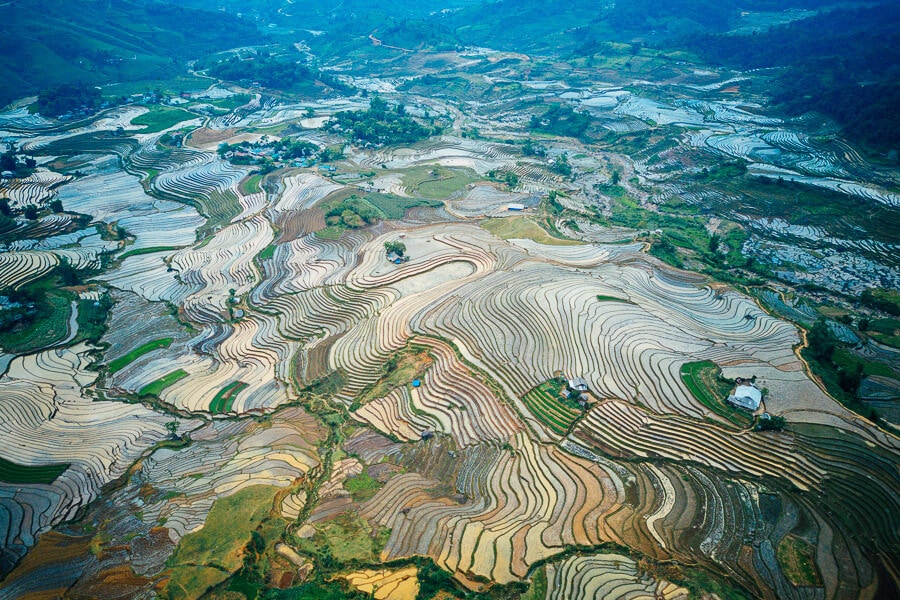 Rice terraces in Y Ty.
Rice terraces in Y Ty.
Y Ty
Located in remote Bat Xat District, I predict that Y Ty will emerge as another alternative to busy Sapa at some point in the future. The area boasts picturesque landscapes, idyllic hamlets, and because of the high altitude, opportunities to ‘chase the clouds’ – a popular pastime in Vietnam which involves snapping photos on misty mornings.
While Y Ty remains underdeveloped and tricky to access outside of group tours for now, a handful of NGOs, including CIRUM, are partnering with ethnic minority groups in the area to introduce sustainable tourism.
These projects run parallel to a legal program that’s working to secure land rights for members of ethnic minority communities, a pressing issue in this part of Northern Vietnam and a mission that’s certainly worth supporting.
How to get there: Sleeper bus or VIP minivan from Hanoi to Lao Cai (5.5-6 hours travel time) + transfer → Buy your bus tickets online here through Bookaway. OR Chapa Express sleeper train from Hanoi + transfer → Buy your train tickets online here through GetYourGuide.
Where to stay: Homestay xá Hà nhì → Check prices here on Booking.com.

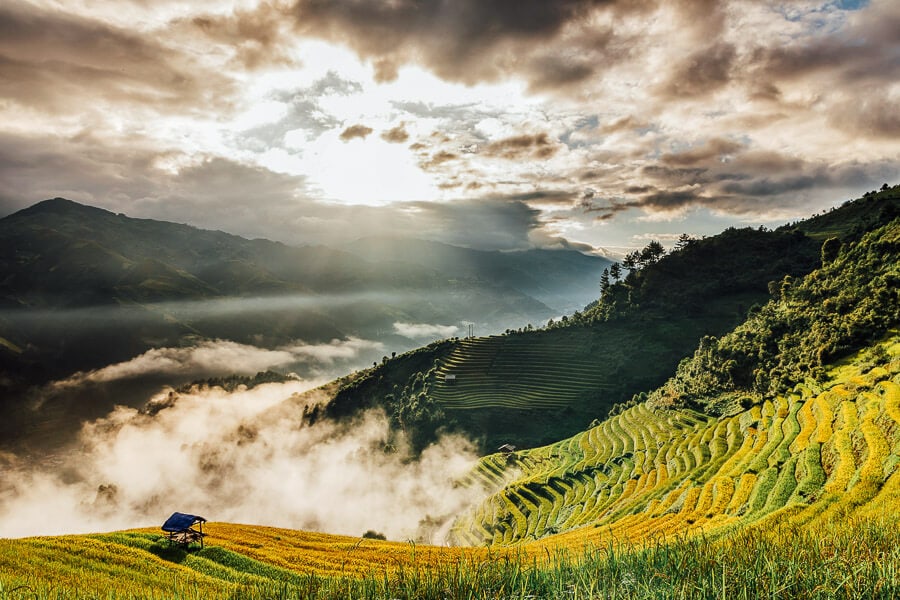 Sunrise in Mu Cang Chai.
Sunrise in Mu Cang Chai.
Mu Cang Chai
If you’ve seen those jaw-dropping photos of rice terraces in Vietnam, there’s a good chance they were snapped in or around Mu Cang Chai. You’d be hard pressed to find fields on this scale anywhere else in the country.
Rendered in shades of bottle green or wattle yellow depending on the time of year, the towering terraces are a weather beacon for the changing seasons and different stages of the rice harvest. What happens out here dictates the fortunes of hundreds of thousands of Vietnamese farmers.
Because of its remote location, Mu Cang Chai District receives relatively few tourists. But if it’s sublime hiking in complete solitude that you’re after, it’s worth the trek.
How to get there: Sleeper bus or minivan from Hanoi (7.5 hours travel time) → Buy your tickets online here through Bookaway.
Where to stay: Hello Mu Cang Chai Homestay → Check prices here on Booking.com.
Tour option: Private two-day tour with trekking and photo stops, including transfers from Hanoi and homestay accommodation → Book here through GetYourGuide.

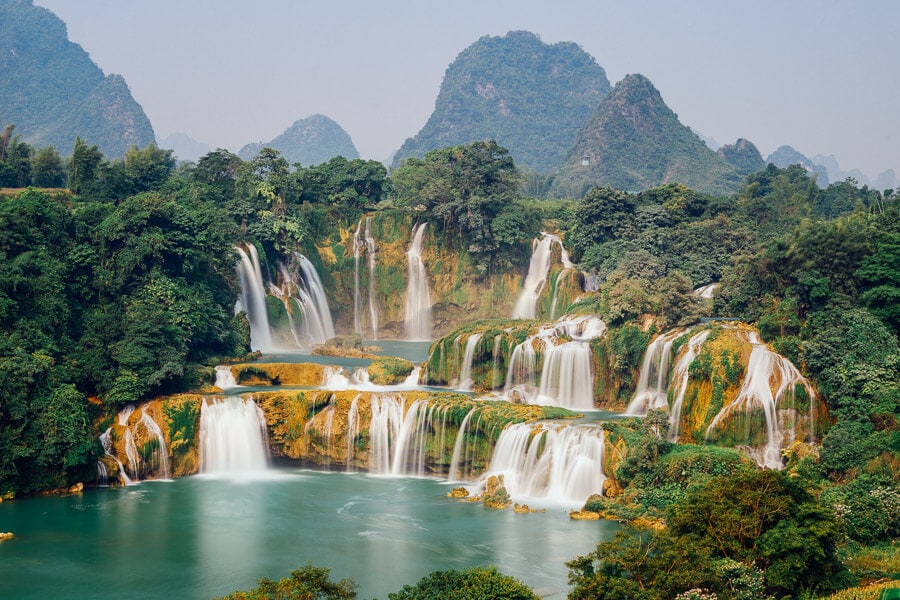 Ban Gioc Waterfall.
Ban Gioc Waterfall.
Detian Waterfalls (Ban Gioc)
Indisputably the most majestic waterfall in Vietnam, the Detian cascades (AKA Ban Gioc falls) are located on the Vietnam-China border in north-east Cao Bang Province.
The waterfalls appear vastly different depending on what time of year you go: In the dry season, there are two distinct waterfalls but in the wet season, the deluge gives the appearance of one giant cascade. The 30-metre sheer drop makes this the fourth largest waterfall along a national border after Victoria Falls, Niagara and Iguazu.
Nearby Cao Bang city is a great base to explore the Detian falls and other smaller waterfalls and lakes in the area.
How to get there: Sleeper bus or VIP minivan from Hanoi to Cao Bang (5.5-7 hours travel time) + transfer → Buy your tickets online here through Bookaway.
Where to stay: Yến Nhi Bản Giốc Homestay → Check prices here on Booking.com.
Tour option: Three-day tour to Ba Be Lake & Ban Gioc Waterfall, including private transfers from Hanoi, a boat trip on the Nang River and full accommodation/board → Book here through GetYourGuide.

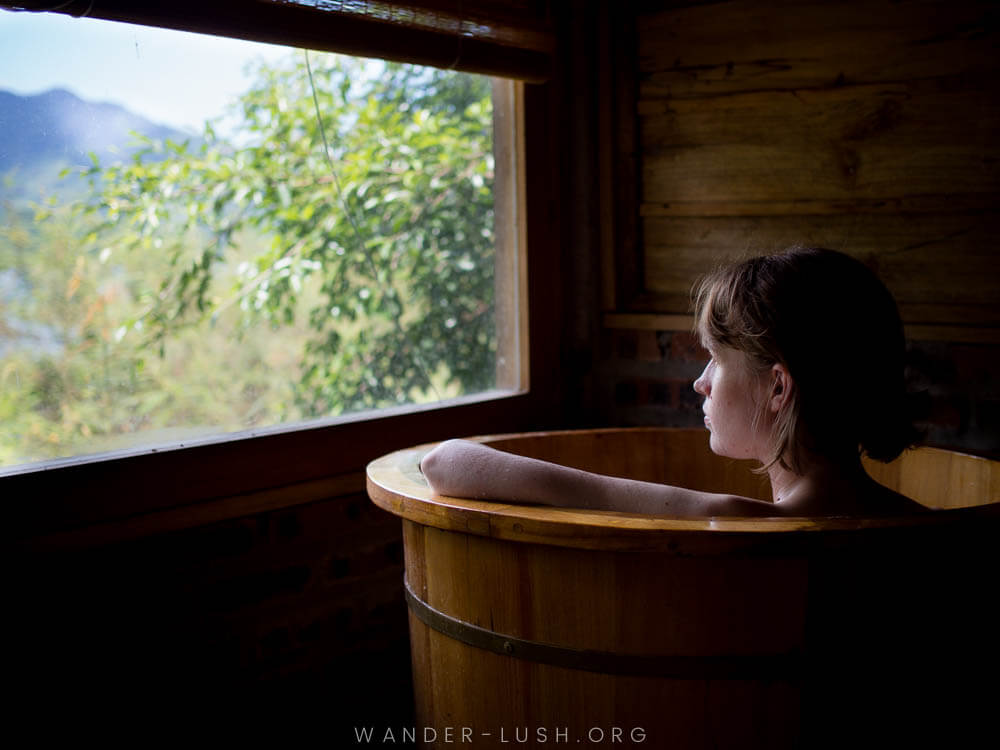 Enjoying a Red Dao herbal bath in Da Bac.
Enjoying a Red Dao herbal bath in Da Bac.
Da Bac
A few years ago, three communities in Da Bac District, Hoa Binh Province formed an alliance to bring tourists to their villages. Their project, Da Bac Community-Based Tourism, is a perfect example of how alternative tourism can thrive.
Visitors to Da Bac can enjoy homestays, delicious home-cooked meals, trekking, water sports (two of the villages have access to the Da Bac River and lake), and cultural activities. Or you could copy me and steep yourself in a wooden tub filled with steaming water and herbs. The bathing ritual is an ancient Red Dao herbal remedy said to improve circulation and general health.
Da Bac is visited by some group tours, but it’s still very much considered to be off the beaten track. Families here need support from tourists like you in order to keep their project afloat. If you’re interested in giving back to ethnic communities while you’re in Vietnam, Da Bac is the perfect place to do it.
Read more: Our terrific homestay experience in Da Bac.
How to get there & where to stay: Multi-day itinerary with Da Bac CBT, including transfers and full room & board → See here for details.

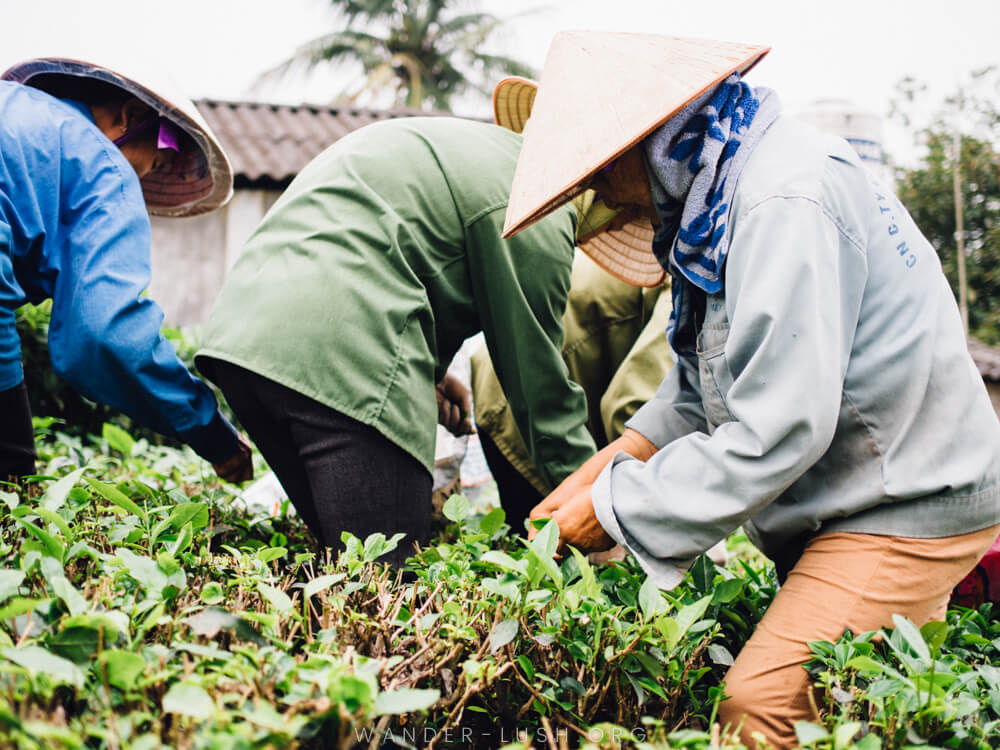 Picking tea in Thai Nguyen.
Picking tea in Thai Nguyen.
Thai Nguyen
Most people associate Vietnam with coffee. But before French colonisation, it was a tea-drinking nation. Thai Nguyen Province, just north of Hanoi, is the hub of the country’s tea industry and grows much of the green tea that Vietnam exports. You can find packets of loose leaf bearing the province’s name all over Hanoi and Northern Vietnam.
There are dozens of privately owned tea plantations located close to Thai Nguyen city, itself a modest urban area. Owners welcome guests to sit down for a tea tasting before walking them through the fields to watch the pickers at work.
Thai Nguyen is also home to the Museum of the Cultures of Vietnam’s Ethnic Groups and the intriguing Thai Hai Tay Ethnic Village. I highly recommend both.
How to get there: Taxi or minivan from Hanoi (1.5-2 hours travel time) → Buy your tickets online here through Bookaway.
Where to stay: Nam My Van Homestay → Check prices here on Booking.com.

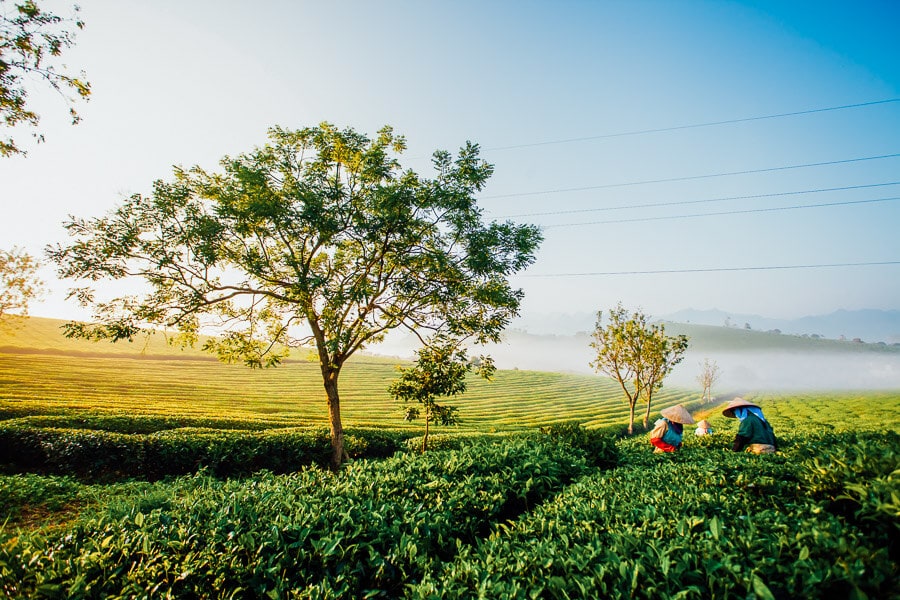 Tea fields in Moc Chau.
Tea fields in Moc Chau.
Moc Chau
Poor old Moc Chau District is almost completely overshadowed by neighbouring Mai Chau. Located less than 100km up the road in Son La Province (but admittedly a little harder to reach by public transport), Moc Chau is a great alternative to the tourist-heavy Mai Chau Valley.
The best time to visit Moc Chau is in the spring, when the landscape is engulfed in blooming cherry blossoms. Other varietals paint the hills different shades at other times of year.
Like Thai Nguyen, Moc Chau has something special in stall for tea lovers: Verdant tea hills run to the horizon. Visit during the harvest season to watch workers busy in the bushes.
How to get there: Bus or VIP minivan from Hanoi (5-6 hours travel time) → Buy your tickets online here through Bookaway.
Where to stay: Hillside House → Check prices here on Booking.com.
Tour option: Three-day Moc Chau and Mai Chau tour from Hanoi, including private transfers, meals and bungalow accommodation → Book here through GetYourGuide.

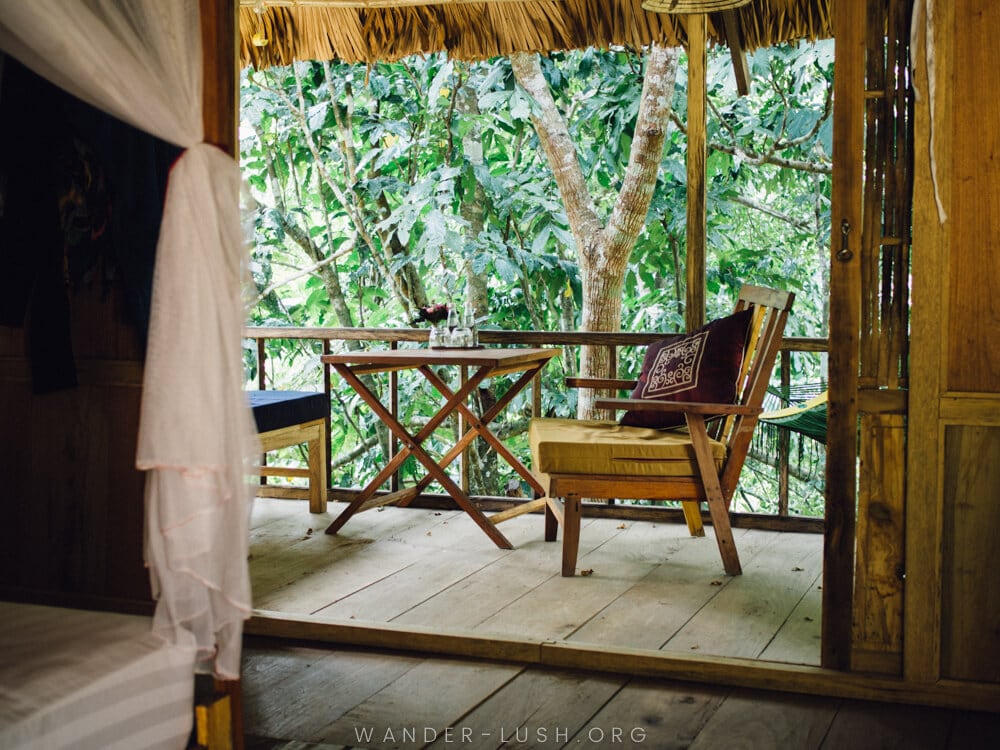 Our forest bungalow in Pu Luong Nature Reserve.
Our forest bungalow in Pu Luong Nature Reserve.
Pu Luong Nature Reserve
Pu Luong is probably the most pristine patch of land I saw during my time in Vietnam. Protected since 1999, the 17-odd hectare reserve is valued for its flora and fauna.
A number of ethnic Thai and Muong communities dwell inside the park’s boundaries, following a largely traditional lifestyle. Among their pursuits is building the incredible bamboo water wheels that Pu Luong is known for. These magnificent structures harvest water from low-lying streams, filtering it into the rice fields via a series of bamboo pipes. It really has to be seen to be appreciated.
Ancient technology set against virgin forest, verdant fields and thatched-roof hamlets: Pu Luong is exactly the sort of landscape Vietnam dreams are made of.
Access to Pu Luong is fairly limited, which of course is a bit part of its appeal. When we visited in 2018, we only saw a few other tourists. It’s possible to trek through the park on a multi-day hike. There are also homestays where you can base your stay and embark on shorter walks.
Read more: Waterwheels and rice fields in Pu Luong.
How to get there: VIP minivan from Hanoi (3.5-4 hours travel time) → Buy your tickets online here through Bookaway.
Where to stay: Pu Luong Ecolodge → Check prices here on Booking.com.

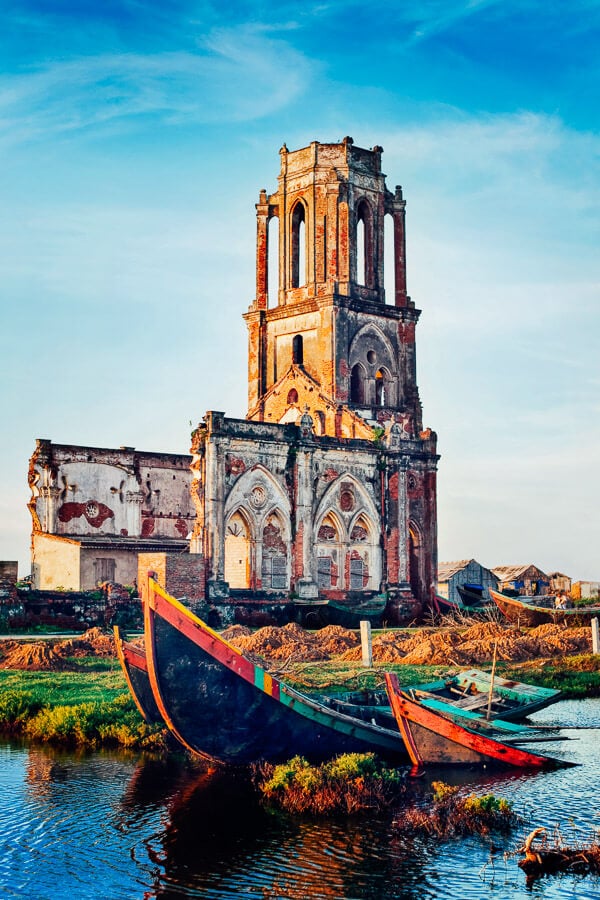 An abandoned Catholic church in Nam Dinh.
An abandoned Catholic church in Nam Dinh.
Nam Dinh
Now there’s a sight I bet you weren’t expecting in Northern Vietnam. Nam Dinh Province, which stretches all the way to the Gulf of Tonkin through the fertile Red River Delta, is famous for its high concentration of Roman Catholic churches. This was the first place missionaries to Vietnam landed in the 1500s, thus Nam Dinh is known as the country’s cradle of Catholicism.
Many of Nam Dinh’s churches are still used by the Catholic community today. Others have been abandoned and left to nature. The architecture in this part of the country is a revelation and something not many tourists get a chance to see.
The most impressive cathedral of the bunch (by my measure) lies in Hai Ly commune. The 1943-built St. Maria Madalena was originally constructed inland, but because of coastal erosion, is now perched precariously on the shoreline.
How to get there: Train, bus or minivan from Hanoi → Buy your tickets online here through Bookaway.
Where to stay: SOJO Hotel → Check prices here on Booking.com.

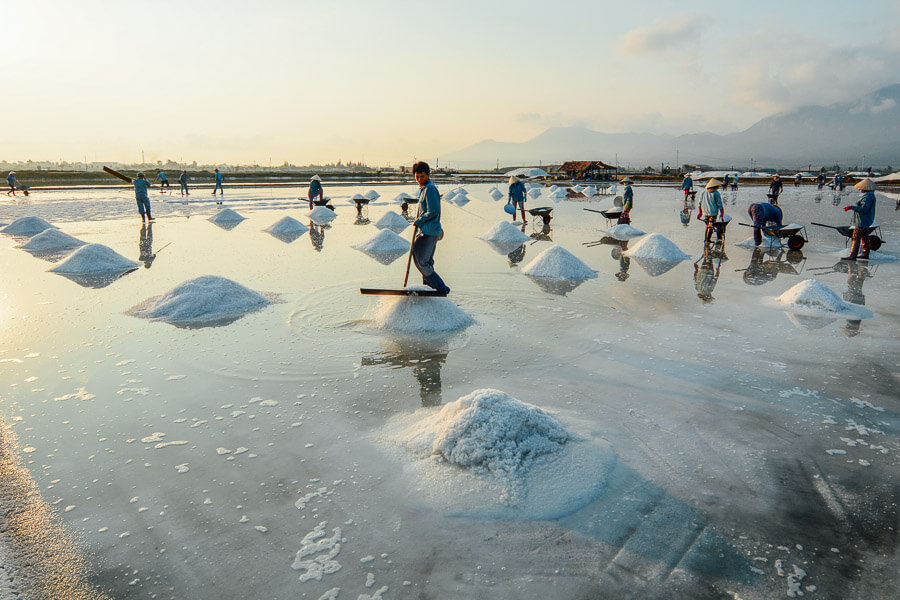 Salt flats in Vietnam. Photo credit: phuongphoto/Depositphotos.com.
Salt flats in Vietnam. Photo credit: phuongphoto/Depositphotos.com.
Diem Dien Salt Flats, Thai Binh
You’ve probably heard about Cambodia’s salt pans in Kampot and the Hon Khoi salt fields in Nha Trang, but did you know salt is harvested in Northern Vietnam, too?
It may be one of the country’s poorest provinces, but Thai Binh is a real gem. Located close to Hanoi on the train line to Ninh Binh, the traditional industry along the coastline in villages such as Diem Dien is sea salt.
Every day, hundreds of workers descend on the burnished fields to harvest basket loads of crystals. A visit to Diem Dien and the other salt villages in Thai Binh provides some unique photo opportunities. It’s also a window onto one of Vietnam’s most gruelling industries and the lives of those who toil on the salt fields to supply our pantry staples.
How to get there: Bus or car from Hanoi to Thai Binh (2-3 hours travel time) + transfer → Buy your tickets online here through Bookaway.
Where to stay: Khách sạn Hoàng Gia → Check prices here on Booking.com.

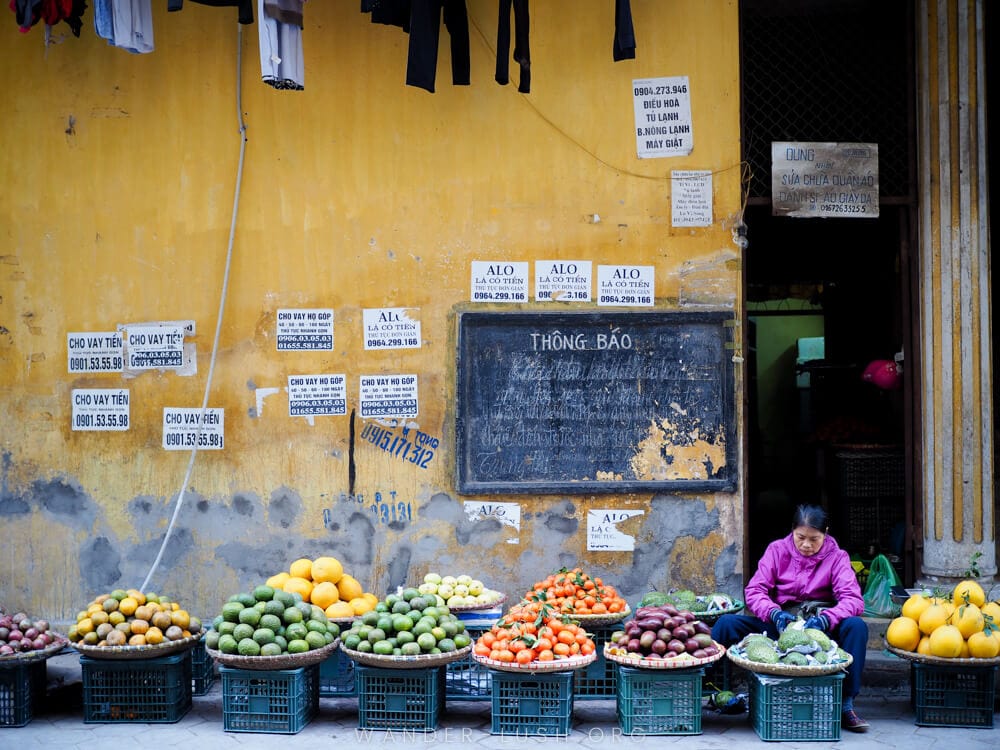 Morning market in Hai Phong.
Morning market in Hai Phong.
Hai Phong City
Despite being the second-largest city in Northern Vietnam, most tourists skip Hai Phong, using it as a stepping stone to Cat Ba Island instead. Cat Ba wasn’t exactly my cup of tea (hence it’s absence from this list). Hai Phong, on the other hand, utterly charmed me.
I learned from my work colleagues that Hai Phong has a reputation among Vietnamese for being a bit rough – probably because it’s a port city. I didn’t get that vibe at all. My impression of Hai Phong is that it has all the charm of Hanoi’s Old Quarter but with less traffic and no tourists.
Highlights include mango-coloured colonial buildings (the French also settled Hai Phong and left their mark here, too), and a bustling marketplace. Hai Phong hosts an annual spring flower festival, which would be wonderful to see.
The road that connects Hai Phong to Hanoi is the best highway in Northern Vietnam, making it a quick and convenient getaway from the capital.
Read more: My quick guide to Hai Phong city.
How to get there: Train, minivan or car from Hanoi (from 2.5 hours travel time) → Buy your tickets online here through Bookaway.
Where to stay: HK Apartment & Hotel → Check prices here on Booking.com.

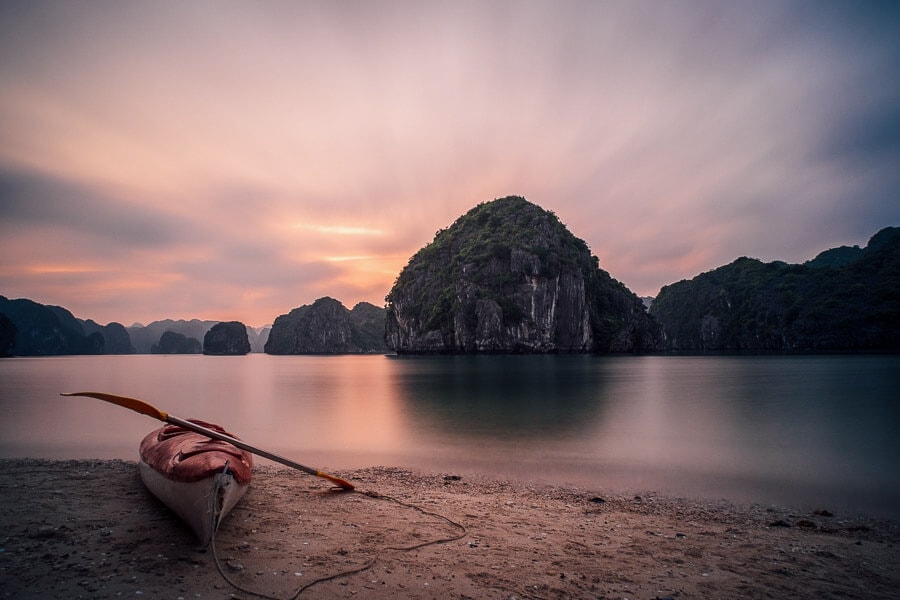 A sandy beach in Lan Ha Bay.
A sandy beach in Lan Ha Bay.
Lan Ha Bay
An alternative to busy Halong Bay and budding Bai Tu Long Bay, Lan Ha Bay is a more obscure base for exploring the waters off Northern Vietnam’s coast. The landscape of karst rock formations is almost identical, yet junk boats are far and few between, which means the area is much quieter and less polluted.
Another advantage Lan Ha has over Halong is the multitude of white-sand beaches that crest several of the larger rocky islands. Kayaking, snorkelling and swimming are all available, either as part of a day excursion or a longer overnight stint.
It’s less common to spend a night on the water here: Instead, many people choose to bunk down at a rural homestay or island bungalow.
How to get there: Bus + ferry from Hanoi or Hai Phong to Cat Ba island (2-4 hours travel time) → Buy your tickets online here through Bookaway.
Where to stay: Lan Homestay (Cat Ba) → Check prices here on Booking.com.
Day trip option: One-day kayaking experience and cooking class on the bay, including transfers from Hanoi → Book here through GetYourGuide.

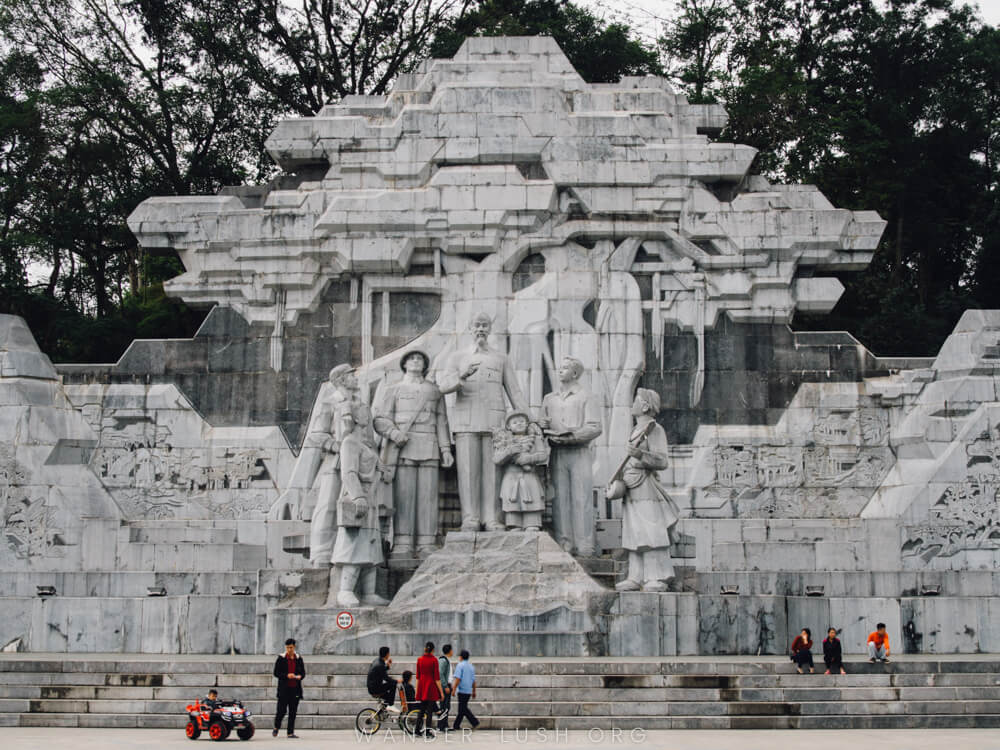 Ho Chi Minh Monument in Tuyen Quang.
Ho Chi Minh Monument in Tuyen Quang.
Tuyen Quang
The small city of Tuyen Quang is steeped in revolutionary history. Landmarks such as Hong Thai Temple and Tan Trao banyan tree are tied up with Vietnam’s struggle for independence.
Na Lua, the shack where Ho Chi Minh lived for a period in 1945 while plotting the French resistance, is preserved in Tuyen Quang, and is something of a pilgrimage site for Vietnamese nationalists.
There’s also a cluster of pretty temples and an impressive concrete monument, which has ‘Communist chic’ written all over it. Tuyen Quang might not be everyone’s cup of tea, but I found it intriguing.
Mineral springs and caves can be visited on Tuyen Quang’s outskirts, along with nearby Thac Ba Lake.
How to get there: Local bus from Hanoi (3-4 hours travel time) → Buy your tickets online here through Bookaway.
Where to stay: Muong Thanh Grand Tuyen Quang Hotel → Check prices here on Booking.com.

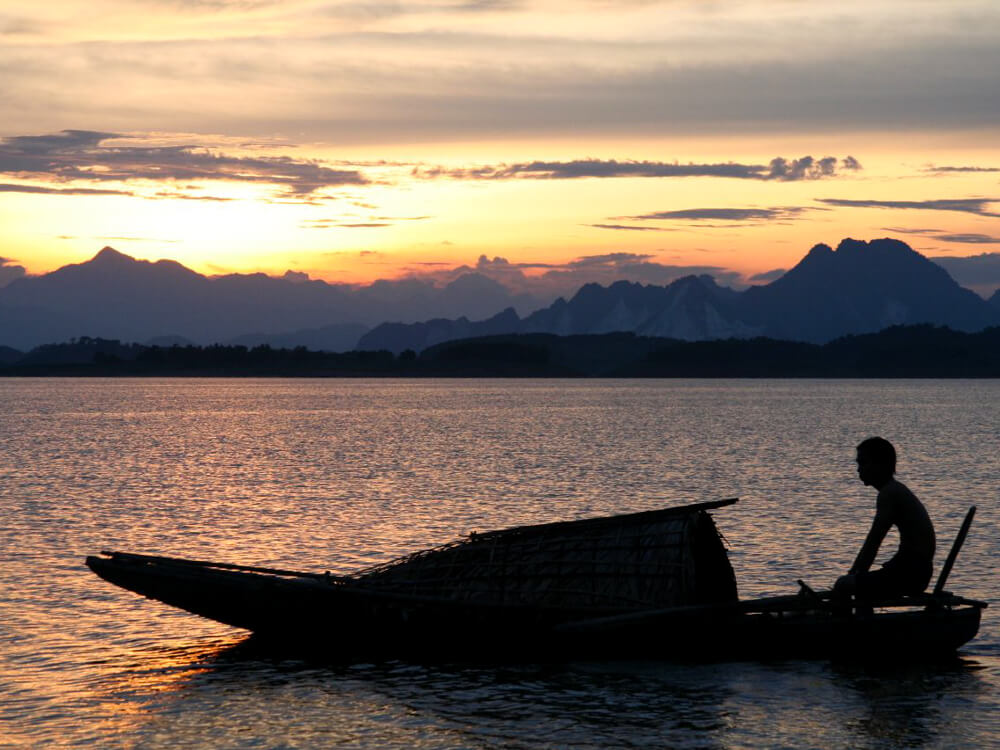 Thac Ba Lake. Photo credit: Tobrouk/Flickr/CC.
Thac Ba Lake. Photo credit: Tobrouk/Flickr/CC.
Thac Ba Lake
Located roughly halfway between Hanoi and Sapa, Thac Ba Lake is a man-made lake that was created in the 1970s by way of a hydroelectric dam.
When viewed on Google Maps, the lake looks like a mottled mess. Those jagged blots are actually hundreds of individual islands – 1,300 to be precise – covered in shaggy forest.
Homestays around the lake and in the nearby city of Yen Bai offer boat tours and other water activities for tourists. Vu Linh, a stilted village on the lake, is a nice place to base your stay.
How to get there: Local bus or transfer to Yen Bai + transfer (3-4 hours travel time).
Where to stay: Xoi Farmstay (Yen Bai) → Check prices here on Booking.com.

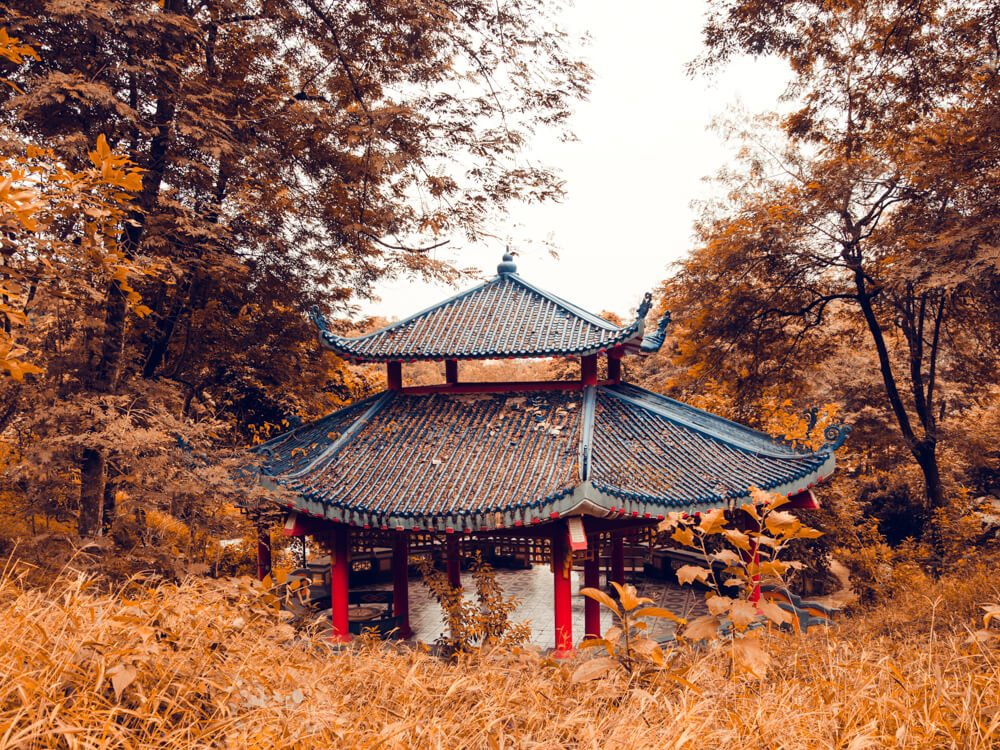 A pagoda inside Ba Vi National Park.
A pagoda inside Ba Vi National Park.
Ba Vi National Park
Just a stone’s throw from Hanoi, it’s a wonder why more tourists don’t take the time to visit Ba Vi, one of Vietnam’s loveliest national parks. Popular with Vietnamese families, especially on weekends and holidays, Ba Vi is something of a local icon. A statue of Ho Chi Minh and a temple dedicated to Uncle Ho sit atop the park’s highest peak.
There are swirling rumours that the independence leader is actually buried somewhere in Ba Vi and that it’s a wax model lying in the Mausoleum in Hanoi. Either way, Ba Vi is a spiritual and auspicious place.
I recommend you take your own transport so you’re free to explore Ba Vi’s winding paths and abandoned buildings at your own pace. There are also a number of hiking trails within the park. If you’re looking for a place to stay the night nearby, I highly recommend Uncle Ty’s Farmstay.
How to get there: Motorbike, taxi or local bus from Hanoi (1-2 hours travel time).
Where to stay: Uncle Ty’s Farmstay (Ky Son) → Check prices here on Booking.com.
Day trip option: Full day trekking tour from Hanoi with transfers → Book here through GetYourGuide.

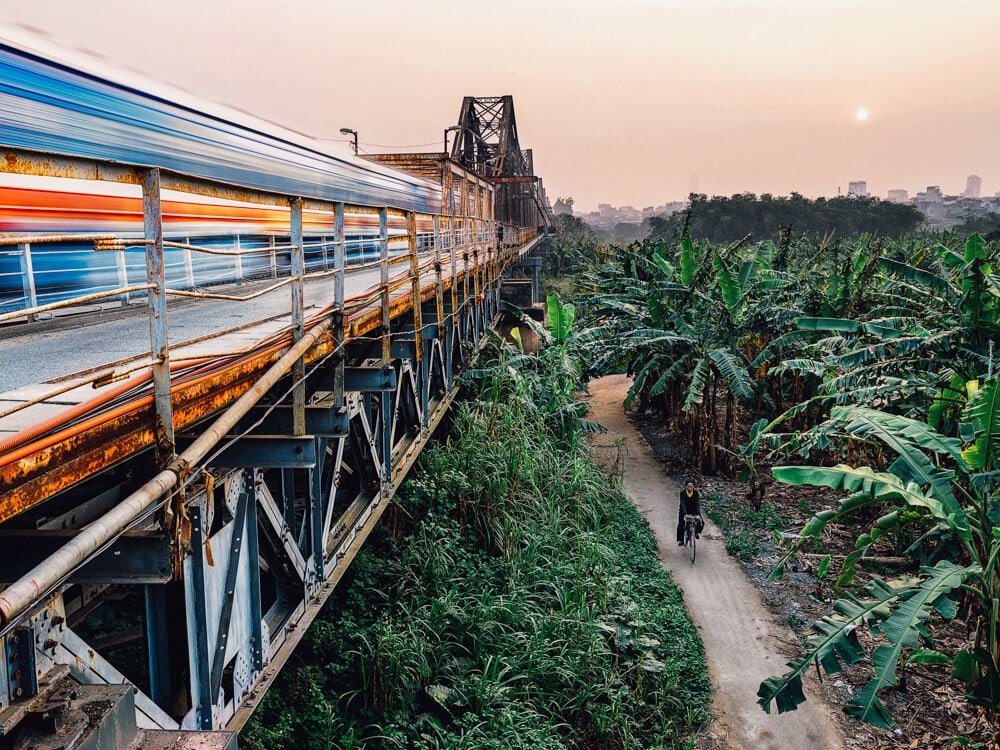 Long Bien Bridge, Hanoi.
Long Bien Bridge, Hanoi.
Bonus: Getting off the beaten track in Hanoi
Even if you’re trying to avoid Northern Vietnam’s hotspots, a few days in Hanoi is an absolute must for every first-time visitor. I called this hectic city home for a full 12 months and still only managed to scratch the surface. Hanoi is absolutely huge.
There are plenty of residential areas and historic suburbs where you can escape the chaos of the Old Quarter. Equally, there are a limitless number of ‘secret’ spots hidden right in plain sight – such as Long Bien Bridge and ‘banana island’ – which evade most tourists’ radars.
Wake up when the city rises to see Hanoi from a totally different perspective. Take a day trip to Duong Lam Ancient Village on a weekday to experience a slice of village life.
Spend the night in a beautiful Airbnb to experience Hanoi’s heritage architecture and winding alleyways hands-on. There are plenty of opportunities to get off the beaten track in Northern Vietnam’s biggest metropolis.
Read more: My guides to Ngoc Ha and Truc Bach, my favourite inner Hanoi neighbourhoods.
Map of alternative places to visit in Northern Vietnam
Use the map to start planning your Northern Vietnam off the beaten track adventure.
Click here to open and save a copy via Google Drive.
Vietnam essentials
Here are the booking sites and services I personally use whenever I travel to Vietnam.
Where is your favourite place to experience Vietnam off the beaten track? Which of these alternative destinations would make it onto your Vietnam itinerary?















![Toni Kroos là ai? [ sự thật về tiểu sử đầy đủ Toni Kroos ]](https://evbn.org/wp-content/uploads/New-Project-6635-1671934592.jpg)


